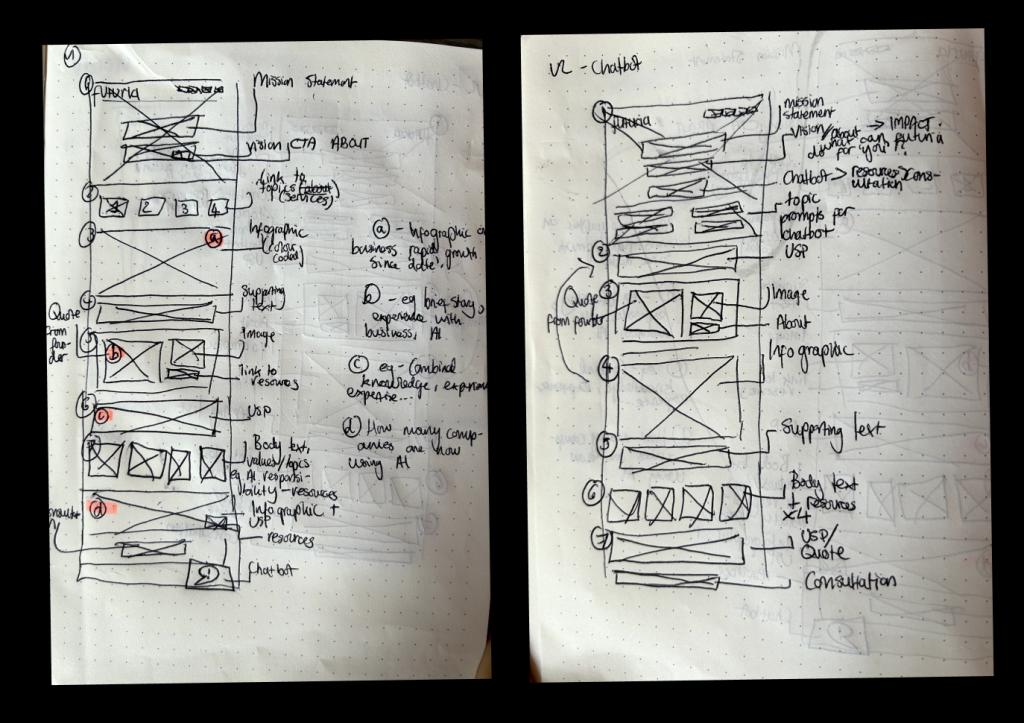Accelleo: Transforming recruitment
I led a conceptual design process for an AI recruitment platform.
Project overview:
Accelleo, seeking to disrupt sectors using groundbreaking AI tools embarked on a mission to reinvent how companies find talent — and how candidates find purpose.

Problem
Solution
The Objective: Design a brand and platform that feel intelligent, transparent, and people-first — turning AI from something abstract and intimidating into something users can trust and benefit from.
- Recruitment fatigue: Both candidates and recruiters are frustrated with clunky platforms and impersonal processes.
- Bias in hiring: Traditional tools often reinforce bias, rather than removing it — undermining fairness and trust.
- AI skepticism: There’s growing wariness around AI decision-making, especially in high-stakes human contexts like hiring.
- Lack of differentiation: Many recruitment brands blend into a sea of blue, corporate, and forgettable. Accelleo needed to stand out.
1.
Who are the target audience?
I researched the recruitment process on both ends, from applicant through to recruiter, conducing survays on their experiences.
I segmented the target users into two key audiences: job seekers (primarily Millennials and Gen Z) and hiring teams at fast-growing companies. Each group had distinct goals, habits, and frustrations with the current recruitment landscape. By identifying their unique pain points, I was able to design solutions that not only solved their problems, but helped position Accelleo as a smarter, more human alternative to traditional recruitment platforms.
Understanding the Audience: Job Seekers & Employers
50% of respondents said they declined a job offer because the recruitment experience was poor.
-
Unreliable Recruiters: Many candidates feel ignored or misled by recruiters pushing unsuitable roles.
Solution → Transparent Matching: Accelleo prioritises role-candidate fit with clear role criteria, AI-powered filtering, and honest comms throughout the process. -
Lack of Feedback: A poor application experience with no response or feedback discourages future interaction.
Solution → Feedback Loops Built-In: The UX includes optional automated feedback, status tracking, and interview prep prompts to guide candidates. -
Dull, Friction-Filled Process: Job discovery is often boring, clunky, or not mobile-friendly.
Solution → Engaging, Visual Job Discovery: The UI is built mobile-first, with rich media, visual cues, and clean layouts to make exploration intuitive and energising.
-
Lifestyle Priorities Overlooked: Many seek remote roles, global options, and flexibility.
Solution → Custom Filters & Values-Based Matching: Filters prioritise lifestyle needs and company culture — from location to work style to values.
2.
What are competitor platforms doing? (right and wrong)
Identifying the competitors. Researching current competitors allows me to familiarise myself with the industry and identify gaps to gain a competitive advantage.

Combining user needs that are not being met with the delivery of current competitors, allows me to develop unique USP's that will put us ahead of the market.
To be continued.
4.
User Flows to Wireframes
This crucial part of the site-build allows me to design and share the site architecture before design.

User Flows are a method that allows the designer to visualise the priorities of a user whilst navigating through a website. Wireframes allow us to shift these goals onto a tangible web page structure, highlighting CTA's and prioritising content based on these goals.
5.
Product

-
This brand is built to feel non intimidating, welcoming the audience into a world where AI technology and the world we know today intertwine as one.